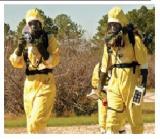Characterizing Contamination and Assessing Exposure, Risk and Resilience
EPA supports clean-up following environmental contamination by providing field scientists with sampling protocols and laboratories with sample preparation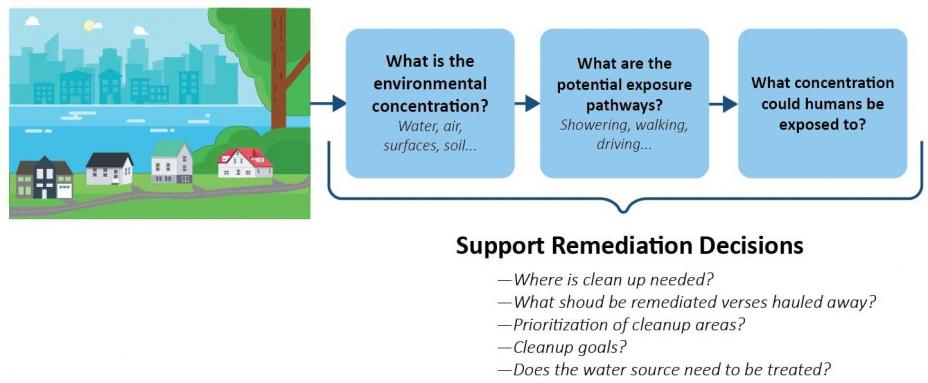 and analytical methods for chemicals, biotoxins, pathogens (e.g., viruses and bacteria), and radiological agents. These products and services are available to emergency responders including local, state and federal agencies.
and analytical methods for chemicals, biotoxins, pathogens (e.g., viruses and bacteria), and radiological agents. These products and services are available to emergency responders including local, state and federal agencies.
Once EPA characterizes the contamination, the chance of exposure to humans is assessed, and the risk to human health and the environment is determined. To accomplish this goal, EPA develops risk models, exposure, and toxicity factors to determine possible human health effects.
Sample Collection and Analytical Methods
After a contamination incident, EPA must rapidly determine the type and extent of contamination to limit its spread and minimize exposure to the public. EPA may collect thousands of environmental samples (air, water, soil and surfaces) to characterize the type and extent of contamination. Contamination involving chemicals, biotoxins, pathogens and radiological agents requires special sampling, handling and analytical procedures. EPA method detection limits need to be at or below clean up levels to give decision makers confidence that reoccpation of an affected area is possible.
To improve the nation's capability and capacity for analyzing large numbers of environmental samples, EPA created the Environmental Response Laboratory Network (ERLN) and the Water Laboratory Alliance (WLA). These national networks of federal, state, and private laboratories can be used, as needed, to support large-scale responses (see Related Resources below).
Key Research
| Chemicals | Accurately characterizing chemical contamination requires sampling protocols and analysis methods. EPA must rapidly detect hazardous chemicals on common indoor and outdoor materials, including porous surfaces that could leach contaminants over time. EPA develops sampling and analysis methods to properly detect hazardous chemicals during both characterization and clean-up stages following an incident. | 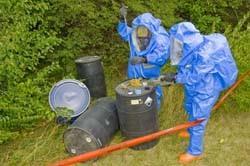 |
|---|---|---|
| Biologicals (biotoxins and pathogens) | Characterization of pathogens such as anthrax (Bacillus anthracis) in the environment is challenging. In addition to determining the presence and types of contaminants, with biologicals, scientists must also determine if the pathogens are living or dead. Only living pathogens pose a health threat. EPA develops sample collection protocols, sampling strategies and analytical methods for biological agents. Working directly with our responders in the field, EPA researchers analyze, evaluate and interpret data to help lessen the impacts of, and kill pathogens in environmental media. |
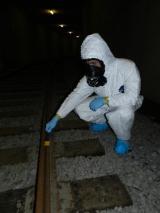 |
| Radiochemicals | Characterization of a radiologically contaminated site relies on the proper collection and analysis of samples. EPA develops sample collection procedures and strategies to support radiological clean-up. Because of the number of radiochemical samples that could require analysis following contamination, the capability and capacity of radiochemistry laboratories could be overwhelmed. To improve the capability of laboratories, EPA develops rapid radiochemical methods for the preliminary preparation and analysis of samples. These methods are faster than the standard analytical methods, and can be used to quickly determine if an area has been contaminated at levels that will require action to limit human exposure. The standard methods can confirm the results of the rapid methods. |
Selected Analytical Methods (SAM)
Selected Analytical Methods for Environmental Remediation and Recovery (SAM) includes analytical methods for chemical, biological, radiological and nuclear samples. EPA created SAM because homeland security incidents could involve a large number of samples that would require the involvement of many labs to analyze. For analysis results to be comparable, it's necessary that all labs use the same methods. SAM provides the preferred methods for the labs to use. EPA created SAM by utilizing or adapting established methods for use with environmental samples. Also, because a homeland security incident may involve contaminants not previously encountered by the labs, EPA develops new methods to detect unusual contaminants in environmental samples.
The Sample Collection Information Document (SCID), a companion to SAM, provides information on sample collection during an environmental remediation event. This information is complementary to information provided in the analytical methods listed in SAM and is found on the SAM website.
Key Collaborators and Partners
Related Resources
Related Homeland Security Research Program Products
Assessing Exposure, Risk and Resilience
EPA assesses, compiles and makes available to our partners information on exposure and toxicity for the chemicals, biotoxins, microbial pathogens, and radiological agents (CBR) that might contaminate structures, outdoor areas, or water systems.
Researchers provide the scientific basis to assess exposure pathways and utilize exposure modeling for CBR contaminants to support risk assessment.
Key Research
| Exposure |
Exposure is contact between a contaminant and a receptor of concern. It is important because the risk is generally approximate to the amount of exposure. Exposure assessment is the critical link describing the transport and fate of a contaminant as it moves from its original source through the environment until reaching a receptor of concern. HSRP researcher are developing novel methods and models on how field sampling data can be used to inform risk decisions. For example, research focuses on advancing the understanding of likely human exposure concentrations from water and wastewater systems by developing modeling tools and evaluations of potential exposure pathways. By increasing understanding all of the potential human exposure pathways from a water system, decision makers are able make more informed remediation decisions during a contamination incident. |
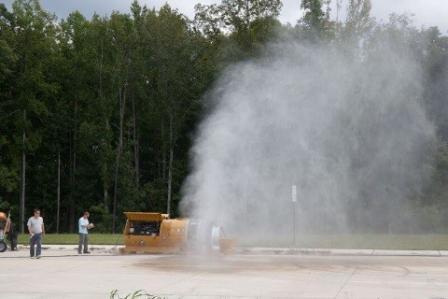 |
|---|---|---|
| Risk |
Risk is defined as the likelihood of harm from an event. It is the product of the severity or consequence of the event and its probability of occurring. Understanding the risks to human health from the release or threatened release of contaminants is important to setting priorities, predicting and preventing terrorist attacks and responding quickly and effectively to save lives during and after an attack. One of the most important points of our risk assessment research is to develop Provisional Advisory Levels or PALs that provide responders and leaders with critical information about dangerous chemical compounds – what harmful effects (ranging from a temporary skin rash to immediate death) we would expect to see in people who are exposed to certain amounts of a dangerous chemical during relatively short periods of exposure. Over 3,000 PALs values have been developed for over 100 of the most dangerous chemical compounds. |
|
| Resilience |
Resilience is the capacity to recover quickly from difficulties. Disasters affect community environments by damaging drinking water and wastewater infrastructure, producing debris and waste, exposing people to harmful substances and destroying natural resources. Building resilience can help communities prepare for and recover from disasters. Being able to measure resilience is an important part of this process. The Community Environmental Resilience Index (CERI) project designs measurements and tools that communities can use to improve their resilience. It has conducted an inventory of resilience tools that EPA already has produced. It is using social science to develop ways to measure resilience. |
 |
Provisional Advisory Levels (PALs) values
PALs values have been developed for more than 130 high priority chemicals to inform first responders and emergency planners about the human health risks for certain levels of exposure via air and water. PALs values are derived by using peer-reviewed risk assessment methods to interpret the results from reliable toxicity studies to predict human exposures that would result in
- mild and reversible effects
- more severe and irreversible effects and or effects that would reduce the ability to escape from a contaminated environment
- lethality or life-threatening effects
Predictive Risk Assessment
PALs values are different from other risk values. Risk values like the Oral Reference Dose (protective risk estimates) are mandated by Congress to ensure an adequate margin of protection of the entire population against unspecified (“any”) adverse effects when assuming a continuous exposure over a lifetime.
PALs values (predictive risk estimates) are different for two reasons. First, PALs values identify the specific types of toxicity (central nervous system toxicity, respiratory failure, blood toxicity, etc.) likely to occur in humans and describe the changes in toxic effects as exposures increase. Second, PALs values are developed for specific less-than-lifetime exposures (24 hours, 30 days, 90 days and 2 years) similar to those that might accompany an unanticipated chemical release and clean-up efforts. These values describe the increase in toxic effects that occur with longer exposure durations.
The predictive risk assessment method directly links hazard to exposure, to help first responders and emergency planners protect human health and identify the types of medical treatment needed if an exposure occurs.


